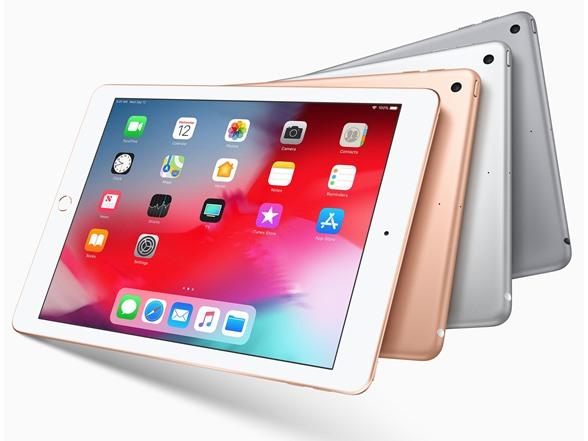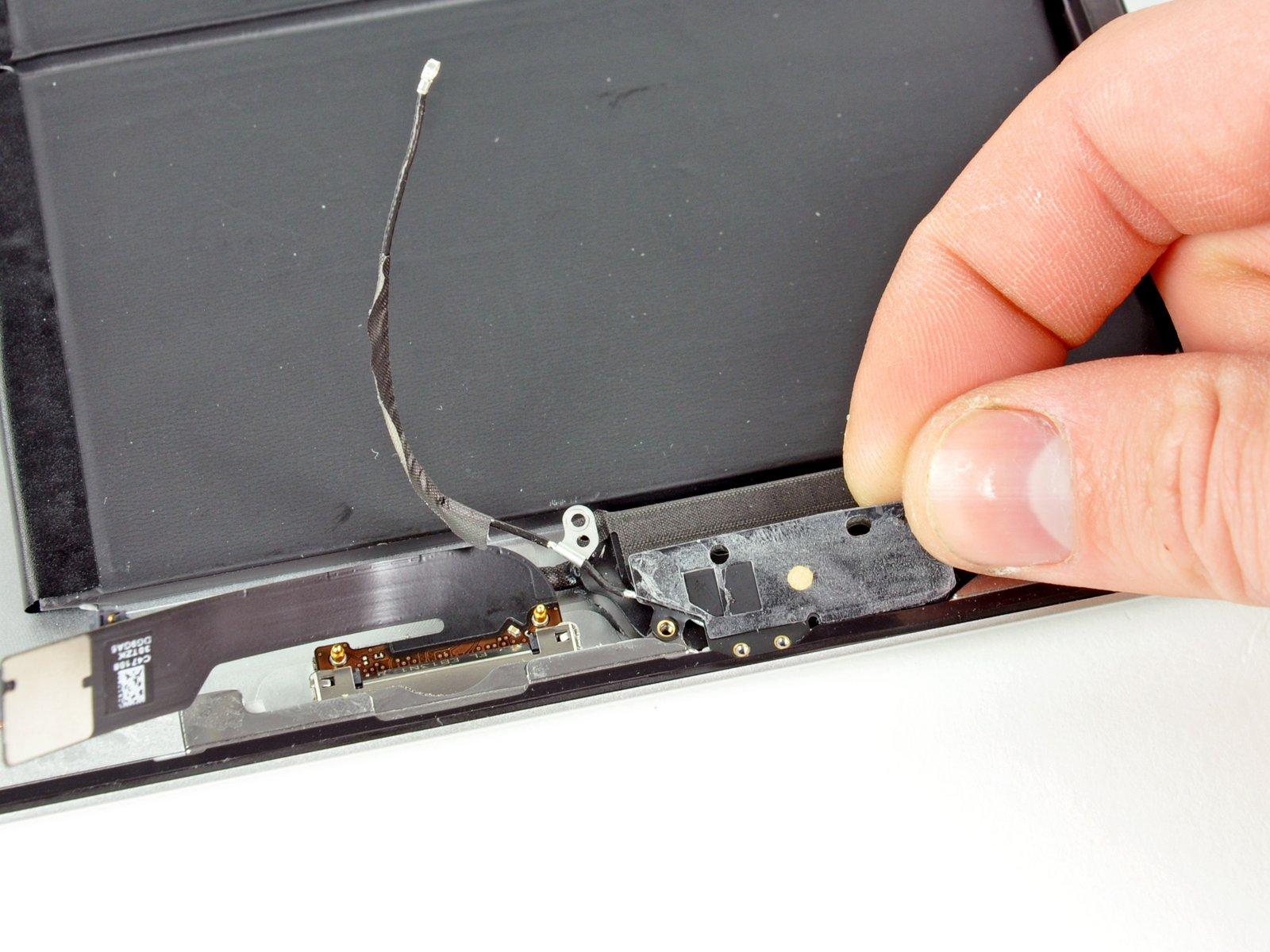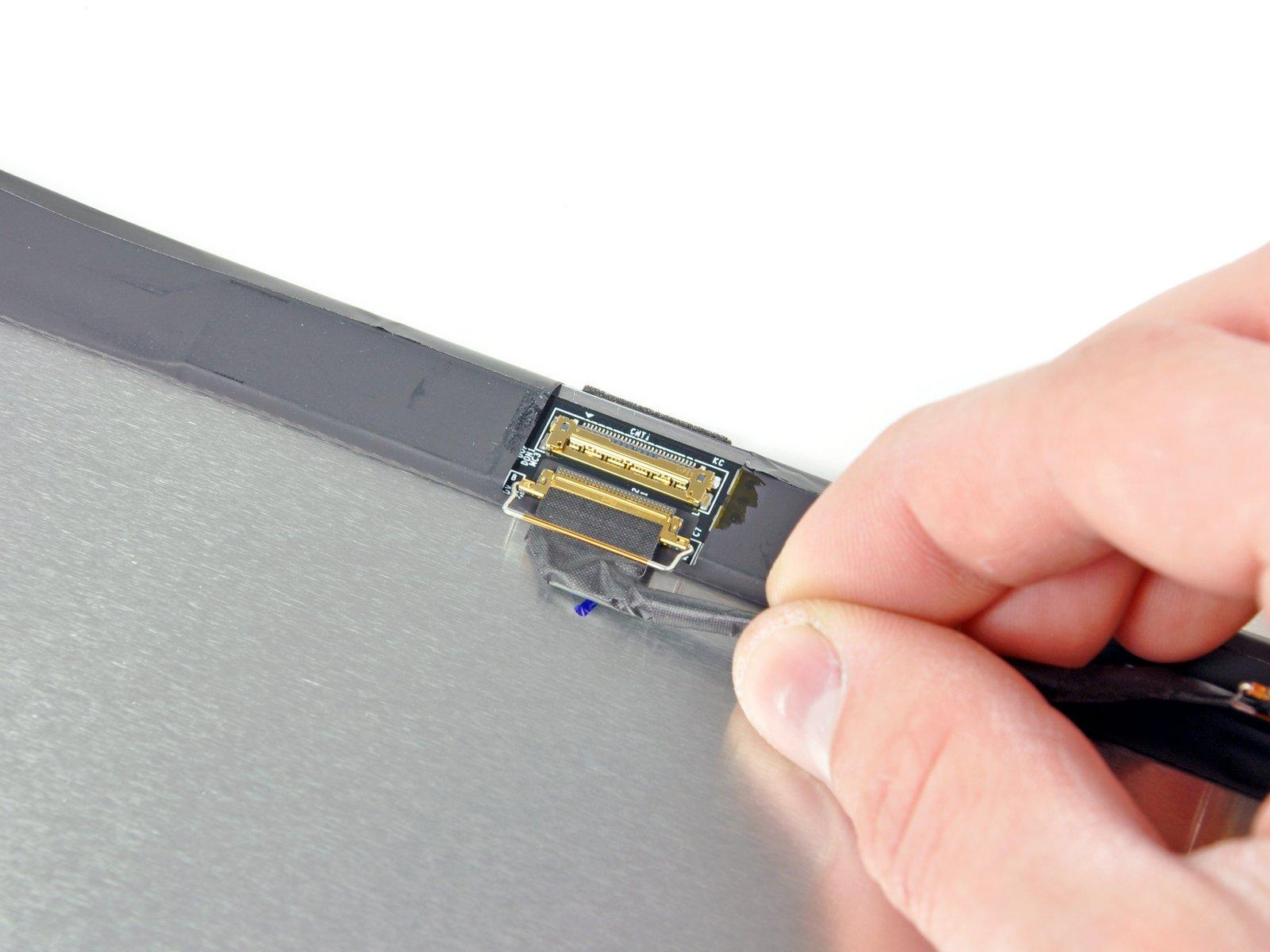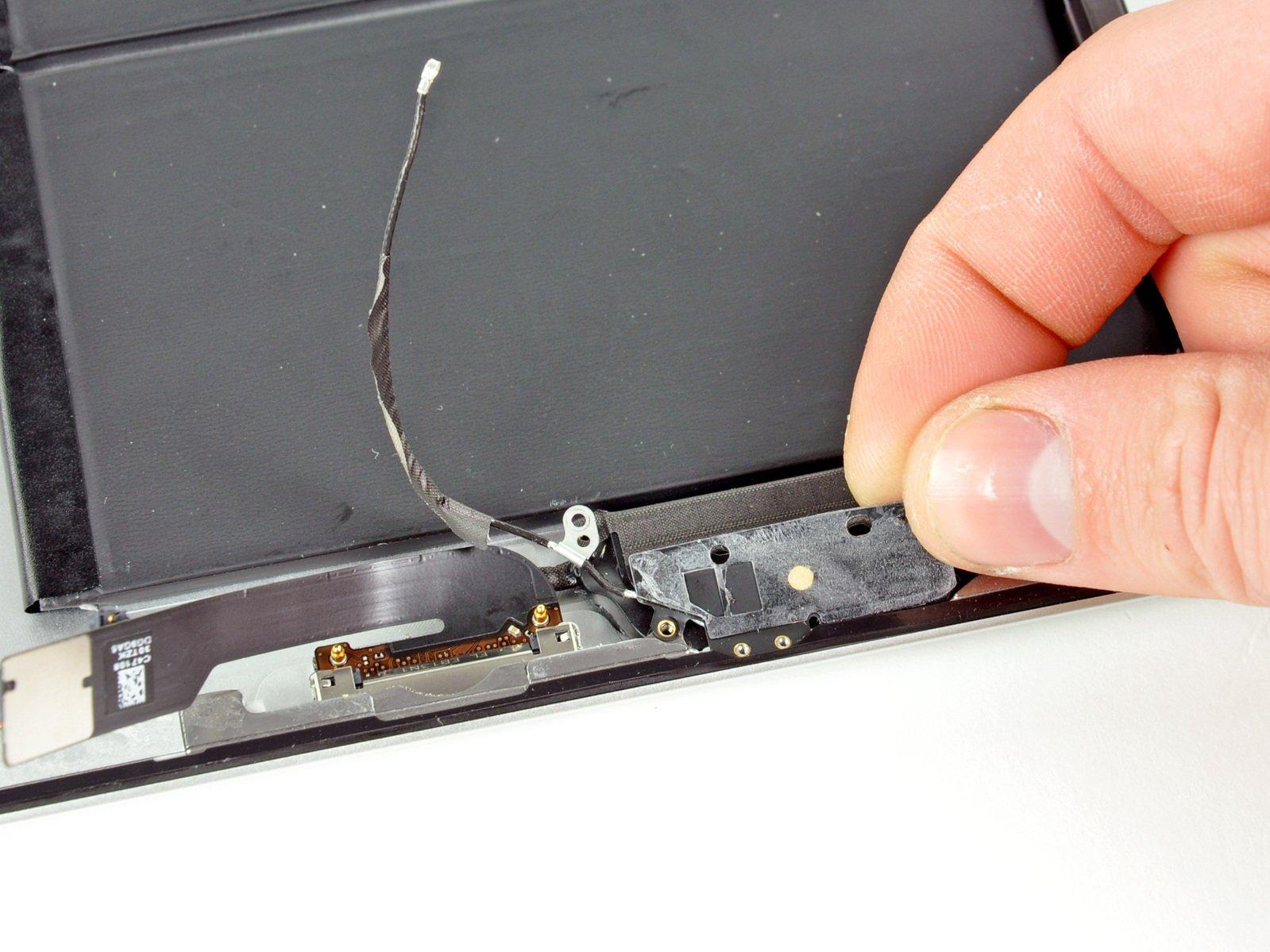How To Replace iPad 3 Wi-Fi LCD Tutorial
Duration: 45 minutes
Steps: 32 Steps
Hey there, repair rockstar! Just a friendly heads-up: If you get stuck or need a little extra help, don’t sweat it! You can always schedule a repair and let the pros handle it. You’ve got this!
When the stunning Retina display on your third generation iPad goes dark, it can really take the sparkle out of your device. But don’t fret! Follow this guide to bring your iPad back to life and enjoy its vibrant visuals once again. And remember, if you need help, you can always schedule a repair.
Step 1
Before you dive in, give your microwave a little TLC! A quick clean will ensure that any pesky residue doesn’t end up hitching a ride on your iOpener. Trust us, a fresh start makes all the difference!
– Pop the iOpener right in the middle of the microwave like it’s the star of the show.
Tools Used
Step 2
Hey there! Just a quick reminder to keep an eye on that iOpener while you’re getting your repair groove on. Overheating can lead to some serious drama, like bursting, and nobody wants that! So, let’s keep it chill and don’t let it get hotter than 100˚C (212˚F).
If your iOpener looks a bit puffed up, it’s best to steer clear. Safety first!
If the middle of your iOpener is still too toasty to handle, just keep using it while it cools down a bit more. It should stay warm for about 10 minutes when it’s just right. You got this!
– Give your iOpener a warm-up in the microwave for thirty seconds.
– As you go through the repair, keep an eye on the iOpener—when it starts to cool down, just pop it back in the microwave for another thirty seconds. Easy peasy!
Tools Used
Step 3
Watch out for the iOpener – it can get pretty toasty! Handle it with care, and don’t hesitate to rock an oven mitt if you need to.
– Carefully take the iOpener out of the microwave, grabbing it by one of the flat ends to keep your hands safe from the warm center.
Tools Used
Step 4
If you’re not packing a microwave, no worries! Just heat up your iOpener by placing it in some boiling water.
– Grab a pot or pan and fill it with enough water to completely dunk your iOpener.
– Bring that water to a nice rolling boil and then turn off the heat.
– Carefully place your iOpener in the hot water for 2-3 minutes, making sure it’s fully submerged and getting cozy.
– Use some tongs to safely lift the warmed iOpener out of the water.
– Give the iOpener a good towel dry to make sure it’s ready to rock.
– Voila! Your iOpener is all set for action! If it needs a little more heat later on, just repeat the process: boil the water, turn off the heat, and let the iOpener soak for another 2-3 minutes.
Tools Used
Step 5
Put on those safety glasses to keep your peepers safe, and watch out for that LCD screen – it’s more delicate than it looks!
– If your display glass is looking a bit worse for wear, let’s keep it from breaking further and protect yourself during the repair by giving it a nice tape hug.
– Layer up some clear packing tape over your iPad’s screen, overlapping those strips like a cozy quilt until the entire face is snugly covered.
– Keep on track with the rest of the guide as best as you can. Just a heads up, once the glass starts to crack, it might keep on cracking while you work. You might need to grab a metal prying tool to help scoop out the glass when it’s time.
Step 6
Just a heads up! When you’re dealing with broken glass, it’s a smart idea to rock some safety glasses. They’ll keep those pesky shards from flying your way. Stay safe while you fix that gadget!
– Place the iOpener flat on the right edge of the iPad, making sure it’s nice and cozy against the surface of the device for optimal heat transfer.
– Give the bag a little time to work its magic on the iPad for about 90 seconds before you dive in and start opening up the front panel.
Tools Used
Step 7
You might need to give the wedged tip of the opening tool a little nudge to slip it between the glass and plastic. Take your time and be gentle, wiggling that plastic tool back and forth as needed. You’ve got this!
– Spot a tiny gap in the adhesive ring at the upper right corner of your iPad, about 2.0 inches (~5 cm) from the top. Let’s take advantage of this little opening!
– Get your tool ready and align it with the mute button. Gently slide the tip of a plastic opening tool into that gap between the front glass and the plastic bezel. Just poke in the very tip, enough to widen that crack a bit.
Step 9
– With the plastic opening tool snugly wedged between the front glass and the plastic bezel, gently slide a plastic opening pick into that little gap right next to your trusty tool. You’re doing great—keep it up!
Step 10
– Gently take out the plastic opening tool from the iPad, and slide the opening pick underneath the front glass, going down about 0.5 inches. You’re on the right track!
Step 12
This adhesive is super strong, so you might need to put in some elbow grease! Just take your time and be gentle.
If you can spot the tip of the opening pick peeking out from under the front glass, gently pull it out a bit. While it’s totally safe to use the pick this way, just a heads up—it might leave a bit of adhesive residue on your LCD. No worries though, you’ve got this!
– As the iOpener warms up the bottom edge, start peeling back the adhesive from the right side of your iPad.
– Gently slide the opening pick down the edge of the iPad, making sure to release that adhesive like a pro!
Tools Used
Step 13
As you peel away the adhesive, you might need to reposition the warm iOpener back on the right edge of the iPad. This little dance depends on how long the iPad has been chilling while you’ve been busy working your magic.
– If your opening pick is feeling a bit sticky in the adhesive, give it a gentle ‘roll’ along the side of the iPad to keep freeing up that pesky glue.
Tools Used
Step 14
– Before you pop out that first opening pick from the bottom corner of your iPad, slip a second pick under the right edge of the front glass. This little buddy will help keep the adhesive from getting too cozy again!
– Give your iOpener a little reheat love and then move it up to the top edge of the iPad. Let’s keep things warm and cozy!
Tools Used
Step 15
The Wi-Fi antenna is snugly fastened to the bottom right corner of the iPad’s rear case with screws and a cable. Given the way the Wi-Fi antenna is positioned, it’s super important to take your time and be careful—otherwise, you might accidentally cause some serious damage to that antenna. So, let’s keep it safe and sound!
– Alright, friends, it’s time to tread carefully! We’re about to release the adhesive that’s holding the antenna to the front panel. Just remember, those delicate parts connecting the antenna to the bottom of your iPad are like fine china—handle with care! Follow these next steps closely and you’ll be golden.
Step 16
Hey there! Just a friendly reminder: avoid sliding the pick too far past the bottom right corner. You wouldn’t want to accidentally mess with the Wi-Fi antenna, right?
– Gently glide the opening pick around the bottom right corner of your iPad, freeing up that pesky adhesive like a pro!
Step 17
Take your time as you glide the opening pick along the bottom right edge of the front panel. The Wi-Fi antenna is lurking just around the corner and can be easily cut if the adhesive decides to misbehave. Stay sharp and keep it steady!
Gently slide the pick out from under the front glass, but don’t go too far! Just enough to keep about 1/8″ (3 mm) of the tip snugly tucked away under the glass. You got this!
– Gently glide the tip of your opening pick along the bottom edge of the iPad, letting it work its magic to release the adhesive around the Wi-Fi antenna.
Step 18
– After you’ve gracefully navigated past the Wi-Fi antenna (about 3″ (75 mm) from the right edge or just beside the home button), slide that trusty opening pick back in all the way.
– Now, glide the pick to the right to break free the adhesive that’s holding the Wi-Fi antenna snug against the front glass. Easy peasy!
Step 19
Keep the iOpener’s heat game strong, but don’t overdo it! Heat it up for just a minute at a time, and then give it a little break of at least two minutes before cranking it back up. You got this!
– Keep on peeling that adhesive along the bottom of the iPad! Make sure to pull the opening pick out far enough to slide around the home button, then reinsert it to a depth of about 1/2 inch (10 mm) once you’re past that home button. You’re doing great!
Tools Used
Step 20
– Keep on peeling that adhesive all along the bottom edge of the iPad like a pro!
– Once you’re in, tuck the opening pick snugly under the front glass near the home button and let it hang out there.
Step 22
If your adhesive has gotten a bit too cool, just pop that iOpener back along the top edge and keep going! And if the iOpener itself is feeling a little chilly, give it a quick reheat and get back to work!
– Gently slide the opening pick along the top edge of your iPad, giving it a little tug to navigate around the front-facing camera bracket.
– The adhesive here is pretty hefty, so you might need to put in a bit of elbow grease. Take it slow and steady to avoid any mishaps that could harm you or your iPad.
– If the opening pick starts to feel stuck in the adhesive, try ‘rolling’ it as illustrated in step 9.
Tools Used
Step 23
If the adhesive is feeling nice and toasty, go ahead and take the iOpener off the iPad for easy access. But if it’s still pretty sticky, just give the iOpener another heat-up and place it on the left edge while you tackle the job.
– Keep peeling away that adhesive along the top edge of the iPad, then gently slide the opening pick around the top left corner. You’ve got this!
Tools Used
Step 24
The digitizer cable is hiding about 2 inches (50 mm) from the bottom of your iPad. When you reach approximately 2.25 inches (60 mm) from the bottom, it’s time to pause your pick sliding adventure!
– Gently slide the opening pick along the left edge of your iPad, letting it work its magic to free the adhesive as you go. It’s nice and thin here thanks to the digitizer running along the entire left side. Just be careful not to go too deep—stick to about 1/2 inch (10 mm) so we don’t accidentally damage that delicate digitizer. You’ve got this!
Step 25
Be extra careful here! The bottom of the digitizer cable is just about an inch (25 mm) from the bottom of the iPad. Take your time and watch out for this little guy—let’s not accidentally snip it!
– With the trusty opening pick still nestled under the bottom edge of your iPad, gently release the adhesive at the bottom left corner. You’re doing great!
Step 26
– Grab one of those nifty opening picks and gently nudge the bottom right corner of your iPad. Once it’s lifted, give it a friendly pinch with your fingers to keep it open.
Step 27
Watch out for any leftover sticky stuff that might still be hanging on! Grab an opening pick and gently slice through any adhesive that’s keeping the front panel snug. You’ve got this!
– Grab your iPad by the top and bottom right corners, and gently twist that front glass away from the iPad like you’re unveiling a surprise.
– When you’re putting everything back together, whip out a microfiber cloth and some compressed air to give the LCD a good clean. Dust and fingerprints don’t stand a chance before you pop that glass back on!
Step 28
– Unscrew those four 2 mm Phillips #00 screws that are holding the LCD tightly to the aluminum frame. You’ve got this!
Step 29
– Grab your trusty plastic opening tool or a spudger and gently lift the right edge of the LCD out of your iPad. You’ve got this!
– Now, swing that LCD around on its left edge and place it down on top of the front panel. Easy peasy!
Tools Used
Step 30
– Grab your trusty spudger and gently lift that sneaky piece of tape hiding the LCD ribbon cable connector. You’ve got this!
Tools Used
Step 31
– Gently lift the retaining flap on the LCD ribbon cable ZIF connector—easy does it!
– With a little finesse, use your fingers or some tweezers to slide the LCD ribbon cable out of its cozy socket on the logic board.
Step 32
– Gently lift the LCD away from the front panel, making sure to keep your hands clear of the screen. You’ve got this!





































































